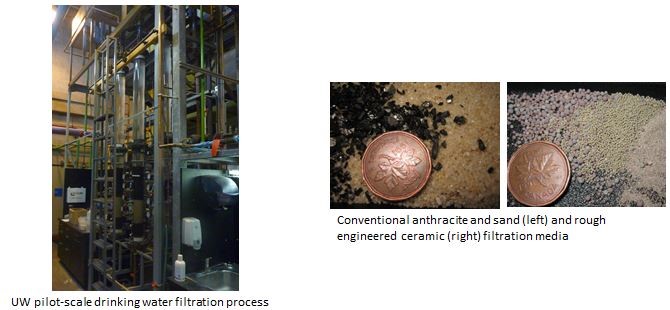While several studies have reported wildfire impacts on some aspects of water quality, most studies have not provided adequate information to assess potential implications of wildfire on drinking water treatment because they lack appropriate water quality data (type of measurement and/or frequency of analysis). Turbidity, a measure of the cloudiness of water from suspended solids, and dissolved organic carbon (DOC) (often related to colour) are key aspects of water quality that drive the type of infrastructure needed to treat source water to produce safe drinking water.

Almost all types of water quality can be treated to produce safe drinking water. The question is, “at what cost”? Water treatment plants are designed to remove suspended solids, chemicals, and pathogenic microorganisms from water. The type and number of different treatment steps that are needed to produce safe drinking water for distribution to communities depend mostly on source water quality. High quality ground and surface waters do not typically require all of the more costly treatment steps used in conventional, chemically-assisted drinking water filtration plants. They may only require disinfection (such as chlorination) or direct filtration without sedimentation, and possibly without flocculation. All drinking water from the tap must meet provincial water quality criteria to be deemed safe for consumption.
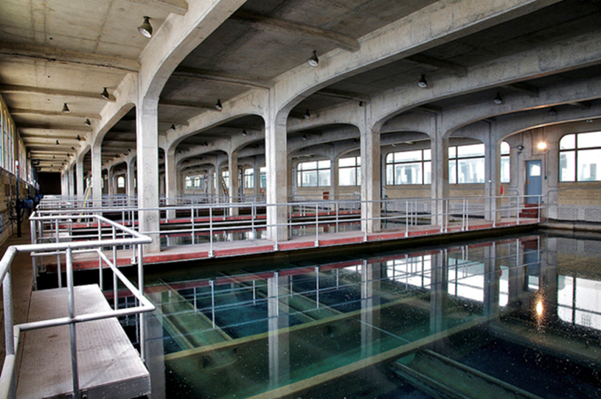

Impacts of Wildfire on Drinking Water Treatment
Water quality changes associated with wildfire can be very costly and potentially catastrophic for some types of water treatment systems. Forested watersheds typically produce high quality source water, which may not require extensive, and therefore costly, treatment infrastructure to produce safe drinking water. High quality source water is most vulnerable to deterioration by disturbance. Extensive sampling during baseflows, storms, and snowmelt during this project enabled analysis of water quality change implications for drinking water. The impacts of wildfire for specific communities depend on many factors; particularly, the type of existing treatment scheme used, the proximity of source water intakes relative to wildfire severity and area burned, and the hydrology of the landscape. Depending on the extent and severity of wildfires and the type of water treatment infrastructure in place, wildfires have the potential to have significant implications for drinking water treatment.
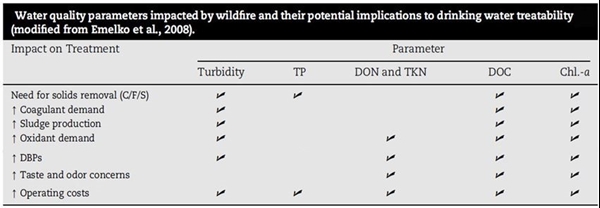
Research Linking Source Water Quality to Drinking Water Treatment Performance
Changes in source water turbidity, dissolved organic carbon, and dissolved organic nitrogen
Automated (real time) turbidity data collected using water quality Sondes are being analyzed in relation to DOC/DON analysed using combustion catalytic oxidation.
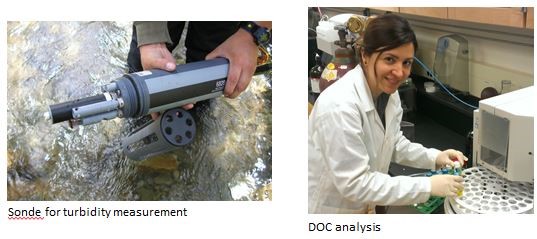
Carbon characterization
The polarity rapid assessment method (PRAM) characterizes the polarity of DOC using several solid-phase extraction (SPE) sorbents. Liquid chromatography – organic carbon detection (LC-OCD) fractionates organic carbon into about 10 classes of compounds. Fluorescence emission-excitation matrices (FEEM) is being used to evaluate carbon character. These techniques enable us to evaluate potential coagulant dosing needs and the possibility of harmful disinfection by-product formation (DBP) potential during drinking water treatment.
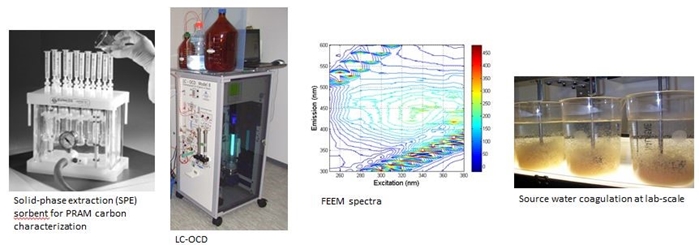
Optimizing solids removal during filtration processes
Granular media filtration can be very effective for removing small particles and pathogens from water. This is the final barrier for solids removal during conventional drinking water treatment. The use of rough engineered ceramic filtration media for enhanced solids removal and filter run time are being evaluated relative to conventional anthracite and sand media. In addition to protecting public health from waterborne pathogens and sediment-associated contaminants, enhanced filter performance (filter run time) offers significant cost savings by decreasing both energy use and water loss.
